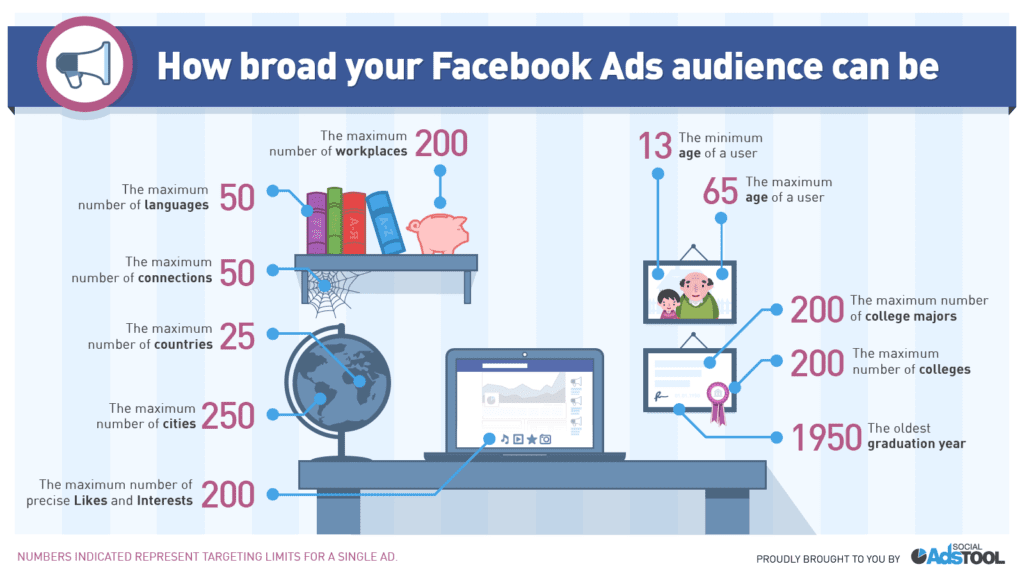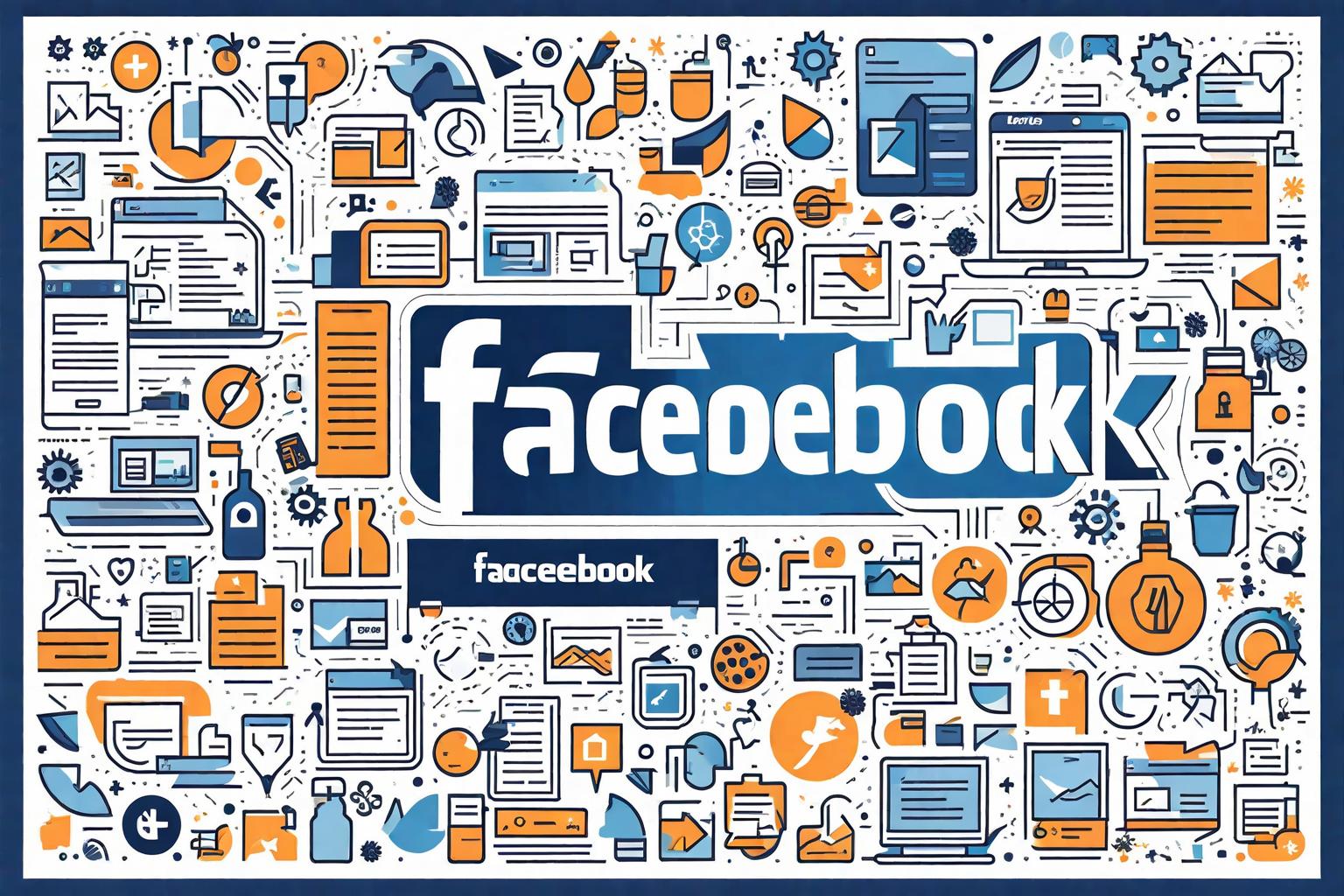Paid advertising is increasingly being conducted on Facebook ads.
Take a look at how the interest rate has increased recently.

Facebook is responsible for 18% of worldwide mobile digital ad spending and 9% of digital ad spending, according to Business 2 Community.
The enormous audience that is already there is truly astounding.
Here are a few images that emphasize the enormity of a Business 2 Community infographic.


In addition, a lot of time is spent on Facebook by users.
The average person actually spends forty minutes a day on this.

When it comes right down to it, all Facebook marketers are actually interested in and focused on one thing: increasing their click-through rate (CTR).
More precisely, businesses want the leads that click on their content to be qualified, relevant, and likely to convert.
This raises a straightforward but crucial question:
What are some strategies for increasing Facebook ad clicks?
Now, I’d like to go over a number of strategies and methods that have been successful for me personally and are supported by in-depth study.
Focusing on your Target Audience
Facebook has an absurdly wide reach.
People from various walks of life are genuinely logging into their accounts every day.

To ensure that the correct individuals see your ads, you must therefore carefully select who makes up your audience.
This is achieved by telling Facebook precisely who you are attempting to contact and by being extremely particular about the demographic you target.
Thankfully, Facebook makes doing this quite simple.
All that needs to be done is target people according to their location, interests, age, gender, and other characteristics.
This is what you should do.
You’ll reach the third phase in Ads Manager—your ad set—after creating a campaign and an ad account.
This is the screen that you will see here.

After a slight scroll down, you will see the “Audience” area.

You should “define your audience, budget, and schedule” at this point.
Assume that Seattle has a modest mom-and-pop-style coffee business.
To make sure that your advertising is only shown in and around greater Seattle, you should first select your location and define a radius.
You would put “Seattle” in the “Add locations” box to accomplish this.

Next Step
The next step is to determine the appropriate radius.
By clicking on +25mi, you can modify the +25mi default option.

Let’s aim for a slightly reduced radius, limiting our journey to just 15 miles.
In this box, you would adjust it.

The next step is to determine which age group best fits your demography.
18 to 65 is the default setting, but you can change it as well.

You can select men or women under the “Gender” area if that’s the only gender you’re targeting.

The section below under “Languages” is rather self-explanatory.
You should focus mostly on the part labeled “Detailed Targeting.”

You should give this a lot of thought and target a very precise audience.
Facebook can assist you in determining the ideal parameters, or you can manually enter a demographic, interest, or habit.
Given that a coffee shop serves as our example, I’ll go with interests like “coffee” and “food and drink.”

Be aware that Facebook will automatically suggest further ideas for you based on the term you type in.
Simply select the option that best suits your audience.
Just like with Google Adwords, you can exclude particular individuals to further refine your demography.
Toggle between “Exclude People” and “Narrow Audience.”

Assume for the moment that I wanted to omit anyone who was looking to learn more about or purchase a real coffee machine.
“Coffeemaker” is what I would type into “Exclude People.”

The key takeaway from this is to determine your demographic with extreme care.
This should improve your conversion rate as well as your CTR, giving you a greater return on investment overall.
Pictures
It’s time for the obvious: pictures.
The fact that Facebook Ads is one of the few PPC platforms that lets you use photos is just one of the reasons I adore them. This is a major bonus in my book.
Naturally, though, any image won’t do.
Your advertisement will be dominated by the image you use, so pick wisely.
And I prefer to stick to a specific formula.
Contrast
The objective is straightforward. You want to catch the user’s eye and direct their attention to your advertisement right away.
Using a lot of contrast is a guaranteed way to accomplish this.
To “make it pop,” I personally like lighter backgrounds with bolder pictures in the foreground.
Here are a few noteworthy instances.

Naturebox truly got it, in my opinion.
I am aware that the color orange draws my attention right away.

This Moo.com advertisement has a comparable impact.
This one from Harry’s also does.

Personally, I think it’s best to go with a simple, minimalistic, and clean look.
It looks fantastic and aids in concentration.
People smiling
Seeing other individuals in advertisements seems to elicit a positive response from the public, as I have observed in my campaigns.
This, in my experience, helps establish an emotional connection, which increases viewers’ receptivity to viewing my advertisements.
Additionally, it can foster trust.
I utilize my own photos in my advertisements because of this.
However, I also advise utilizing pictures of happy people.
Here are two excellent instances.


Here’s something else I’ve learned from professionals:.
Using pictures of attractive people is good.
Although it may sound conceited and the definition of “attractive” is essentially arbitrary, it does play a role in attracting clicks.
And here’s an additional item.
If your target audience is predominantly male, you should usually use an image of an attractive woman; if your target audience is predominantly female, you should use an image of an attractive man.
You get the idea.
Do I need to use stock photos?
Using stock photographs is often the first impulse of Facebook marketers, especially in their early stages of business.
It’s inexpensive, quick, and simple—Facebook offers them for free.
However, I believe that this is something that needs to be avoided.
Why?
Many stock images lack authenticity and have a corny quality.
They have a very inexperienced feel.

You get what I mean?
For blog posts and other content (I mean, I use stock photos too!), they’re usually fine, but for Facebook ads, I usually advise against using them.
Poor stock photos just won’t do because most people are used to seeing actual pictures of their friends and family on Facebook.
Try using actual photos instead, as they usually receive more clicks.
Creating the ideal headline
You’ve chosen your target market and employed attention-grabbing imagery to appeal to Facebook users.
The headline of your Facebook ad is the third essential component.
The headline you use for your content is crucial, as I’ve previously discussed.
“Eight out of ten people will read the headline copy, but only two out of ten will read the rest,” to put things in perspective.

Two words that best sum up the ideal headline would be concise and precise.
What is the definition of short, then?
As stated by Jeff Bullas,
Posts less than 80 characters in length receive 66 percent higher engagement than longer posts.
Still,
Very concise posts — those between one and 40 characters — Generate highest engagement. Only 5 percent of all retail brand Wall Posts are less than 40 characters in length, even though these receive 86 percent higher fan engagement..
“Be specific” refers to keeping your headline directly focused on your offer.
There should be no doubt whatsoever regarding what your offer is to Facebook users.
Here’s a great Veeam software example.

This should increase the number of clicks that convert, in addition to just increasing the total number of clicks.
Composing an outstanding copy
It’s very simple to write copy for your Facebook advertisements.
You have to inspire Facebook users to take action and click in one or two sentences.
To be honest, though, it’s easier said than done.
But there’s a special formula that should significantly boost your click-through rate.
This Wishpond article about Facebook posts that encourage clicks is fantastic.
They provide you with some targeted phrases to maximize clicks on them.
I believe there are three, in particular, that are very effective.
First Phrase: “Want [Blank]? Visit [LINK] to view [Blank].
In a nutshell, this encourages people to click on your link by immediately addressing their needs and/or pain points.
Here’s an illustration of how HubSpot did this quite well.

Phrase #2: “Click here to learn how to do something.”
I’ve employed this strategy multiple times for both my campaign as a whole and my Facebook ads.
It makes sense that you can generate a ton of clicks by claiming to have the answer to a pressing query your audience has.
Here’s an illustration of this strategy being used by Wal-Mart.

Phrase #3: “Do you need to [fix a problem]? This is a simple method for doing it: [LINK]
The majority of customers struggle with some kind of issue.
Simply state that you have a solution, and watch as your click-through rate soars.
This is how Target uses this strategy.

You’ll notice that Facebook ads consistently have excellent sales copy.
It’s easy.
Thus, there’s no need to continue. Simply figure out a way to summarize the problem, pain point, etc. that your audience is facing and how clicking on your advertisement can help.
Avoid thinking too much about it. Just make sure to be succinct and direct.
Add your own thoughts as well.
Here’s a small but savvy tip that can significantly increase your click-through rate (CTR), but not many people know about it.
And that involves delicately incorporating your own viewpoint.
Here’s an excellent illustration from Amy Porterfield.

Observe how she offers her personal opinion, stating that “#2 is the most potent of them all!”
Even though it might not seem like it would have a big impact, you might be shocked by the real impact.
When we tested it, there was a significant 8 percent difference in CTR.
Thus, whenever possible, give this simple tip a try.
It can make a big difference in a matter of seconds.
Put a CTA Button
People generally react well to CTA buttons, as has been fairly well documented.
Furthermore, did you know that adding a CTA button to your ads on Facebook is really simple?
It is accurate.
A range of CTA options are available to you, including “Download,” “Learn More,” and “Shop Now.”

To set this up, simply refer to this section of Facebook’s Advertiser Help Center, which provides step-by-step instructions.
Offer Social evidence
Social proof is a significant concept.
Indeed, I think it can make or break you a lot of the time.
Therefore, I always try to include social proof in my writing whenever I can.
Consider Quick Sprout as an example.
Ben Huh’s brief but heartfelt testimonial has been really helpful to me in increasing conversions.
And what do you know?
Facebook ads also allow you to leverage social proof in a big way.
Here’s a really nice illustration of how AdEspresso does this perfectly.

The goal of their advertisement was to get as many people to download their eBook as possible.
They used the fact that they had 17,348 downloads in just two months as motivation for this.
Prospects can tell from this that the eBook has to be authentic.
17,348 people can’t all be wrong, after all.
Of course, the particulars will vary based on your own objectives and the message you want to spread.
However, when creating your advertisement, keep in mind the idea of social proof.
Make every effort to allay any doubts or anxieties that your audience might be experiencing and that could be keeping them from connecting.
When to publish something
Using a social network is one way that Facebook ads are different from other, more traditional PPC platforms.
A shrewd social media marketer also understands the importance of timing.
The number of impressions and clicks your post gets will depend on when you post it.
A few years ago, I wrote about the topic of timing social media posts in an infographic published on Quick Sprout.
These are the key details that you should be aware of.
Experts say that between nine and nine in the morning is the best time to post on Facebook. and 7 p.m.
However, I think this is a bit general.
Based on studies, 1 p.m. is the greatest at 3 p.m. for obtaining the most shares. is the best option to get the most clicks.

Since getting as many clicks as possible is our aim, 3 p.m. is a fantastic time to target with your Facebook advertisements.
Changing the time is an easy task. This is it right now.
Go to your Ads Manager’s “Budget & Schedule.”

You’re going to see this.

You’ll notice that “Run my ad set continuously starting today” is the default setting under “Schedule.”
You don’t want to be in this situation.
All you have to do is select “Set a start and end date,” which is the second option.
Then something will appear underneath.

You can then modify the duration for which you would like your advertisements to appear.

Here are a few more tips that I’ve picked up from testing and experience.
You will get the most clicks per post if you post once every other day.
This is because when you post more than once a day, people have a tendency to ignore your content.
Additionally, because Thursday and Friday have 3.5 percent higher engagement rates than other days, attempt to share your most valuable posts on these days.
A/B Testing
One final thing before we part.
As usual, to ensure that your Facebook ads are “just right,” I advise carrying out extensive A/B testing.
Even if your initial CTR rate seems reasonable, there’s always room for improvement.
There’s just no substitute for doing some simple experimentation to determine what will elicit the greatest reaction from your target audience.

I advise attempting:
- Various pictures
- Variations in the header
- Variations of copies
- CTAs
In summary
Facebook ads rank among the most exciting PPC platforms available right now, in my opinion.
You can potentially reach well over a billion people, and the cost-per-click is fairly reasonable when compared to many other platforms.
Naturally, a variety of factors will affect your level of success.
You can’t expect to succeed by throwing up some ads on the fly.
Also You must apply tried-and-true guidelines and psychological cues that people are known to react to.
You should definitely increase your CTR and maximize your Facebook ad budget by using the formula I outlined.
For Any Other Help You Can Contact us or Leave a Comment for us


1 thought on “Facebook Ads: Boosting Clicks for Maximum Engagement”